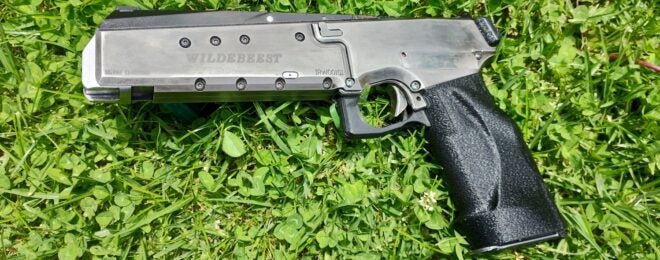Welcome to a new episode of this very irregular series. Again, we have the chance to take a look at the highly unique brainchild of a talented inventor. The Wildebeest is, to our knowledge, the only semiautomatic pistol marrying a low bore axis architecture with a magnum caliber. Let’s have an exclusive look into what it is (and what it can become).
More on Low Bore Axis @ TFB:
- [IWA 2022] An Affordable LOW Bore Axis Italian Pistol! The Revo Arms IS-9
- The Quest For The Low Bore Axis: A Novel Italian Approach
- Laugo Arms ALIEN – Low Bore Axis and Proper Grip
- The Quest For The Low Bore Axis
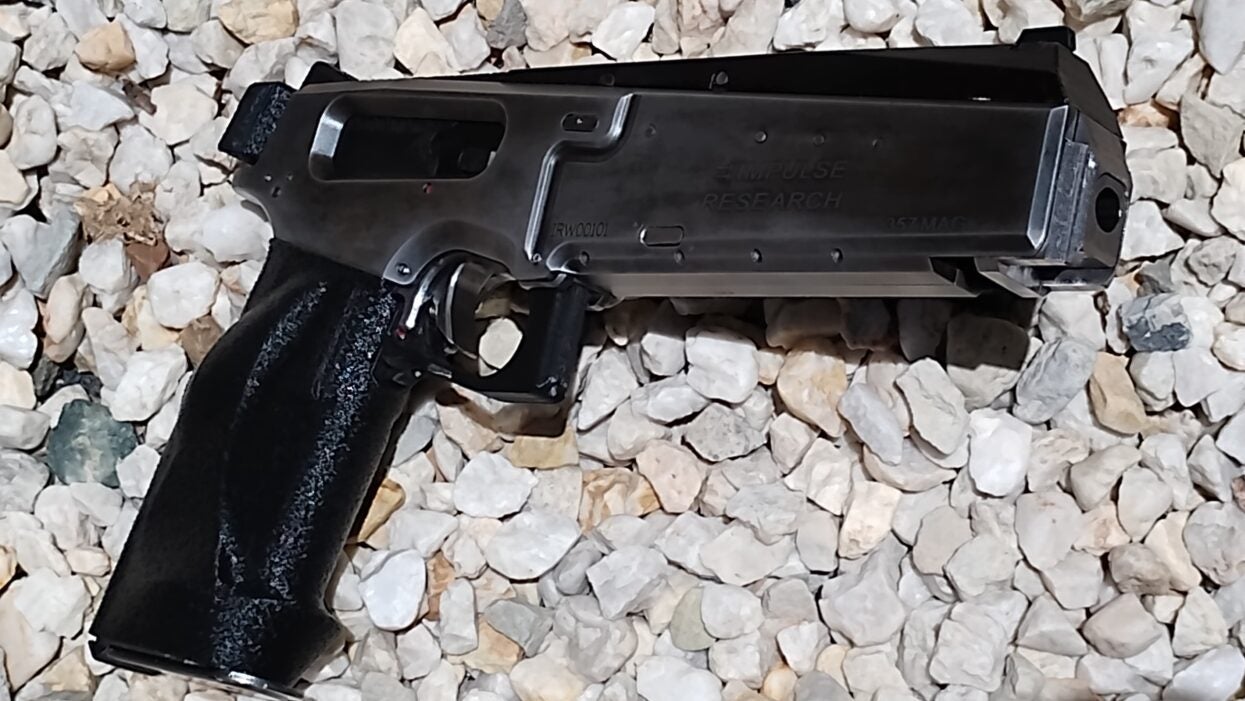
The Quest for The Low Bore Axis – Magnum Edition – The Wildebeest from Down Under
The Quest for The Low Bore Axis – Magnum Edition – The Wildebeest from Down Under – Table of Contents:
- Background – All The Simple Solutions Have Already Been Invented
- .357 Magnum – An Australian Story
- The Operation – Is it a Jatimatic Pistol?
- The ‘Beest vs The ‘Eagle – One Thing in Common and Many Differences
- What’s Next
- Conclusions
1. Background – All the Simple Solutions Have Already Been Invented
The mind behind this design is the Australian engineer Bernard Besselink. Just like most of us here, Bernard was bitten by the bug of firearm interest during his childhood, and like some of us started to design his ideal firearm in his head. The basic concept of a powerful semiautomatic pistol started developing about 30 years ago. At the time, Bernard had the chance to visit the now defunct manufacturer LAR Manufacturing, and he realized that, with few exceptions, modern firearms manufacturers are either too small to invest in R&D or too focused on offering market tweaks over existing solutions.
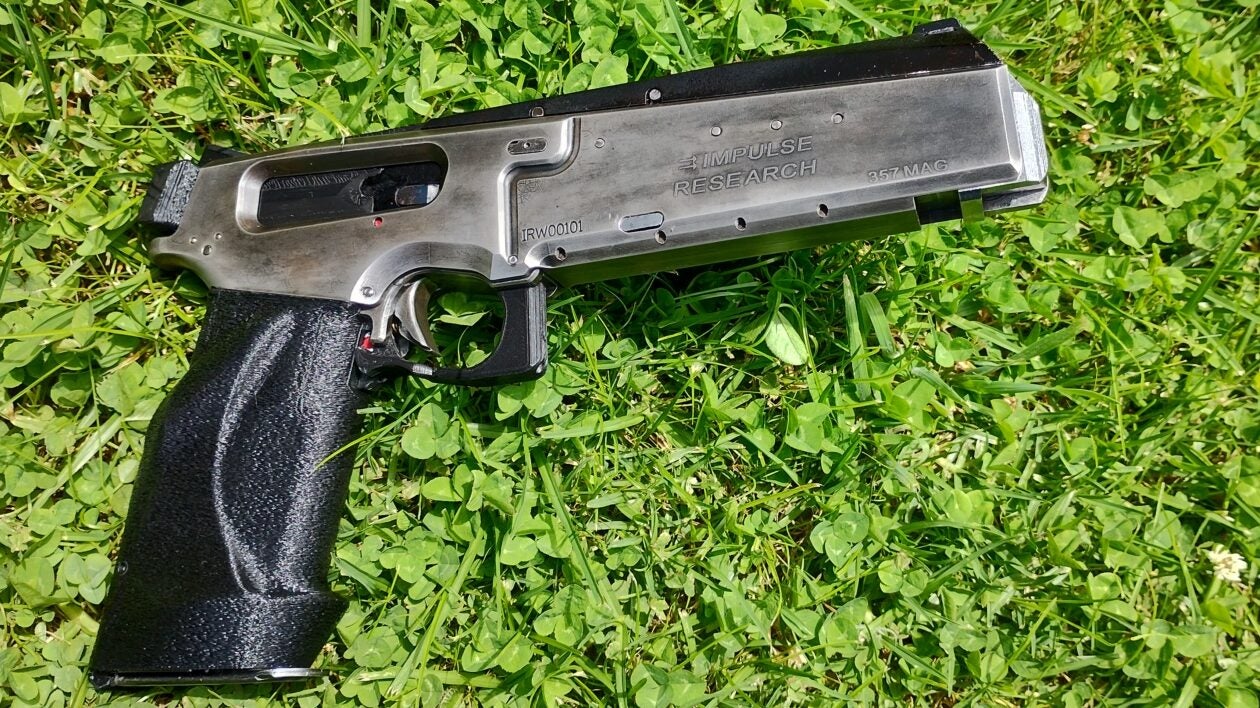
The Quest for The Low Bore Axis – Magnum Edition – The Wildebeest from Down Under
The industry appears quite risk-averse, and “all the simple solutions have already been invented, therefore complex ones are left to explore.”
The initial embodiment of what will become the Wildebeest was patented in the year 2000 and it features a gas-operated system. This never became an actual prototype, and Bernard later managed to tone down the complexity of his solution by leveraging recoil energy to operate it.
2. 357 Magnum – An Australian Story
Before we jump into the details of the Wildebeest uniqueness, let’s look at its peculiar caliber choice. On the market, there are now just a couple of semiautomatic pistols shooting .357 Magnum, and there have been maybe a couple more in the past. Bernard’s goal was to build a functional and powerful range toy, and he wanted to do it around an existing Magnum caliber. The Australian law, however, prevents civilians from owning any pistol larger in caliber than 9 mm, unless they are actively competing in shooting disciplines that specifically require such calibers (e.g. silhouette shooting). Since .357 is still 9 mm in diameter, it was the most powerful option legally available.
The design, however, can be scaled up fairly easily, at least to .44 Remington Magnum.
3. The Operation – Is it a Jatimatic Pistol?
No.
It’s not a Jatimatic inspired design.
You may have first seen the Wildebeest on Mark Serbu’s awesome YouTube channel, and you may have been fooled into thinking about a Jatimatic relation by the external appearance with lines angled down from the rear sight to the lower muzzle. However, despite the looks, the system is completely different from the inclined blowback of the Finnish SMG.
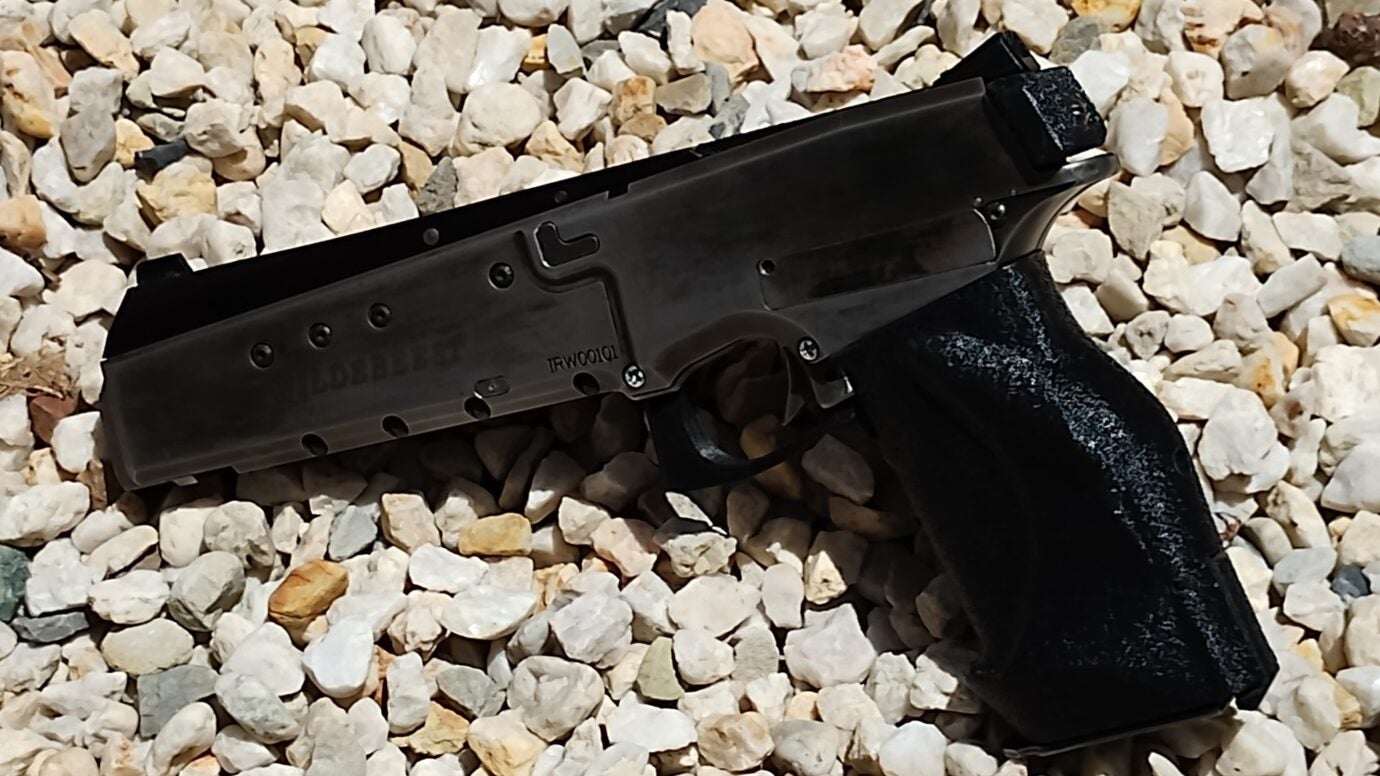
The Quest for The Low Bore Axis – Magnum Edition – The Wildebeest from Down Under
The Wildebeest operates thanks to an entirely novel system that combines elements of short recoil with subtle bits of delayed blowback. The video below shows the process better than words can, but we’ll try to break it down without going into patent jargon.
A very distracted observation could be that we’re facing a Browning system flipped… down under.
However, there’s much more to that. First, we have to realize that the concept we have for a semiautomatic pistol slide here does not apply. We generally see the breech face as part of the slide or, in a few cases, the slide being a bolt carrier. In this case, the slide that we can manipulate to load the first round is the “feeding slide”, its only functions are loading rounds from the magazine lips to the chamber and extracting spent casings from the barrel. This element never interacts directly with the pressures of the discharge.
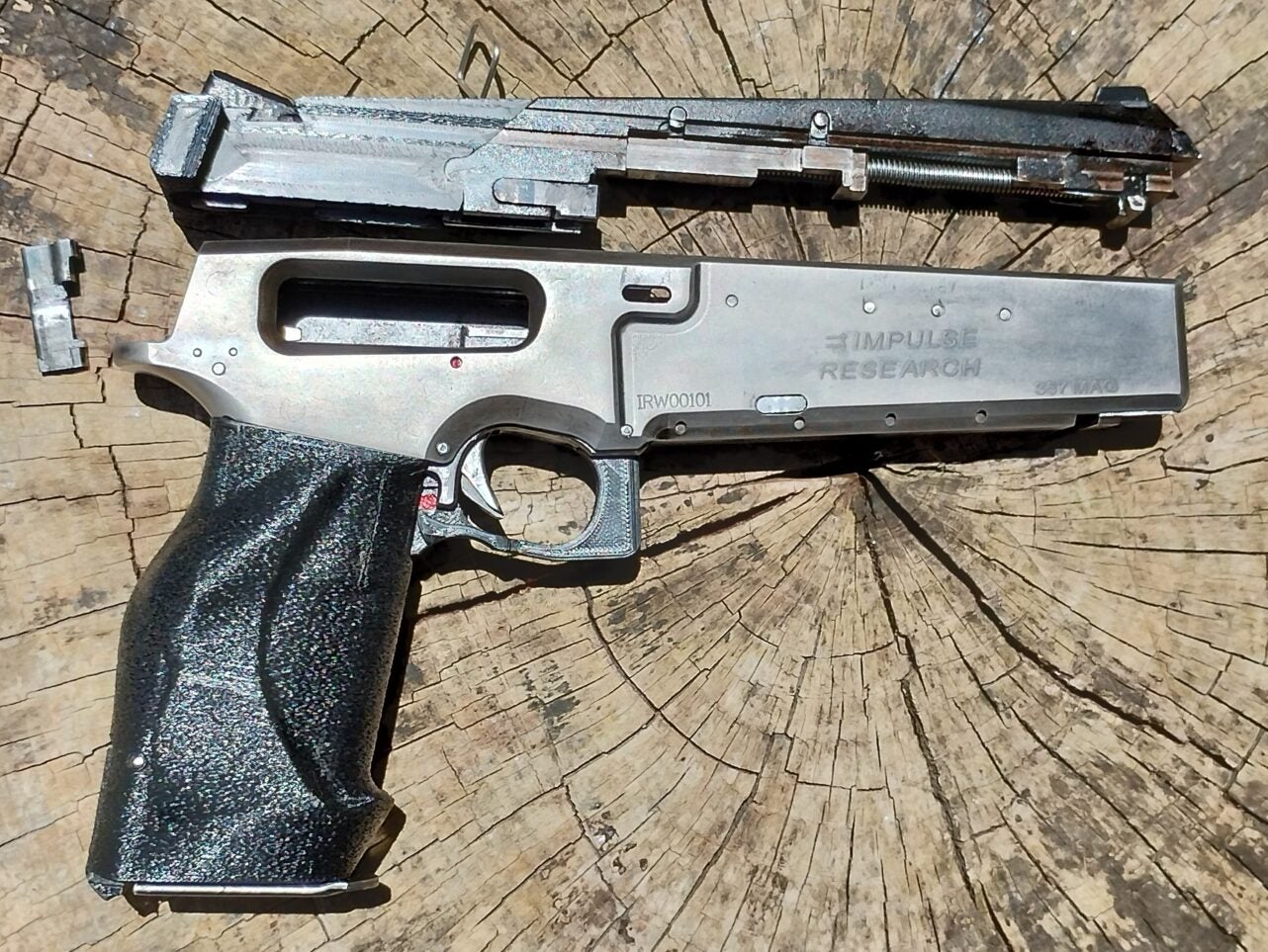
The Quest for The Low Bore Axis – Magnum Edition – The Wildebeest from Down Under – An exclusive photo of the partially disassembled prototype showing the areas of the feeding slide interacting with the barrel assembly
Where is the breech then? In shooting position, the barrel sits low in the frame within a cradle that allows it to pivot into the extracting/feeding position. This cradle wraps around the chamber, offering a breech face to the case. This breech face allows the passage of the striker through a hole in its central axis. Upon firing a round, the barrel and the cradle recoil linearly by a few millimeters, and an interaction with the frame, acting with a mechanical disadvantage, pivots the barrel, raising its chamber portion at a fixed angle. The rearward motion is also imparted to the feeding slide, which disengages from the lower assembly and continues on its path once the barrel stops.
After extracting the spent casing and reaching its end stops, the feeding slide comes back forward, pushed by the captive recoil spring sitting above the barrel. The round feeds into the chamber, the barrel moves forward and aligns with the breech, and the pistol is ready to fire again.
In the current prototype, the rearward motion of the barrel assembly also resets the striker, therefore this first iteration of the pistol operates only in single action. The full striker configuration is unique as well and it could be patented, but this is mostly due to the need of having a compact solution in an unusual location in this design.
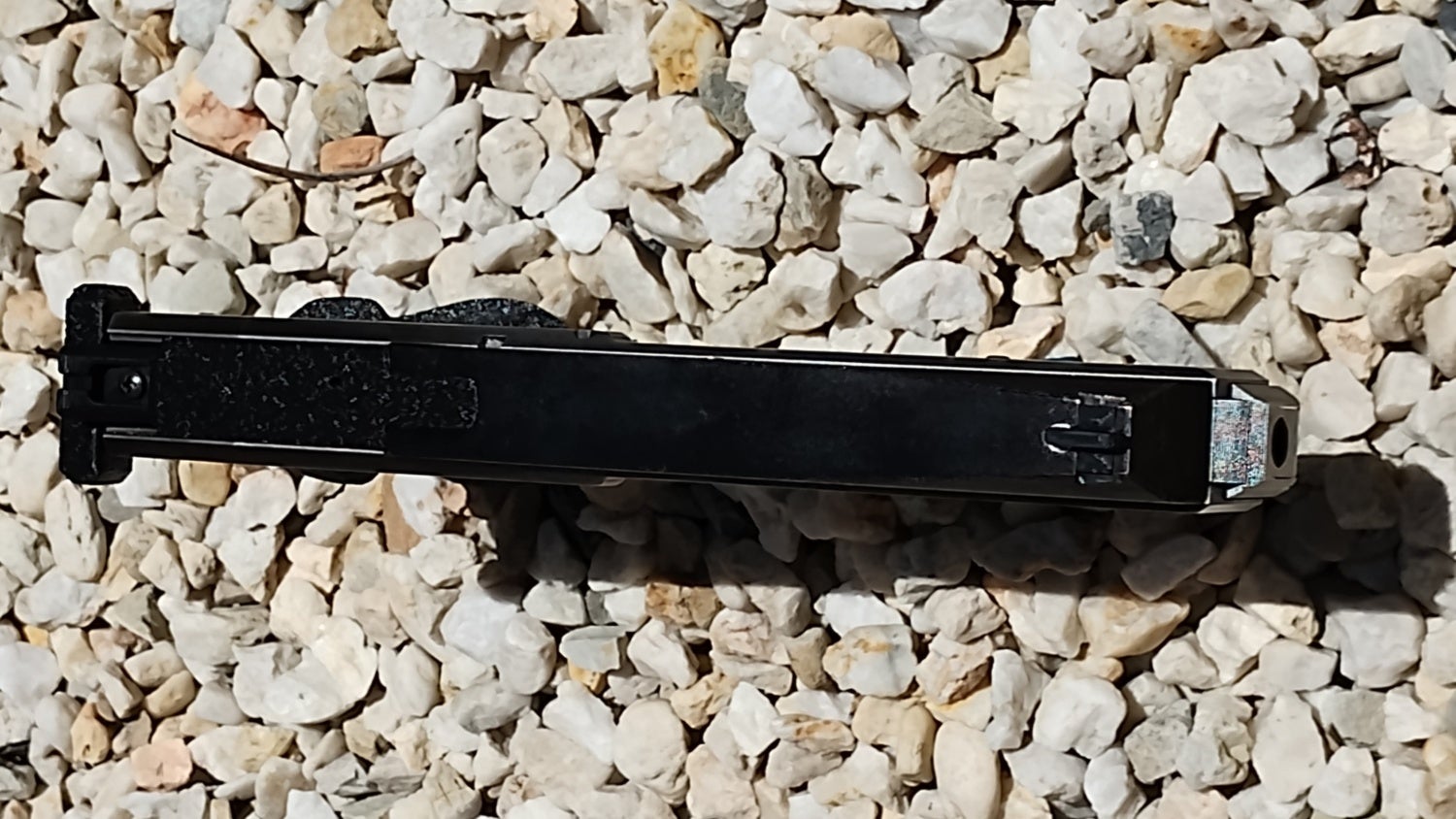
The Quest for The Low Bore Axis – Magnum Edition – The Wildebeest from Down Under – Top view
The cycling of the prototype is tailored for Magnum rounds as the operation, although very fast, dissipates quite a bit of recoil energy: .38 Special-level loads would not cycle. The action could likely be designed to work with non-Magnum calibers, but probably there would not be a measurable advantage over existing designs.
4. The ‘Beest vs The ‘Eagle – One Thing in Common and Many Differences
One of the hardest-to-design components of any semiautomatic firearm is always the magazine. Starting from an existing platform helps inventors, allowing them to focus on the core of their invention without spending ages on magazine-induced issues. This is even more apparent if the round to be fed is rimmed, like the .357 Magnum.
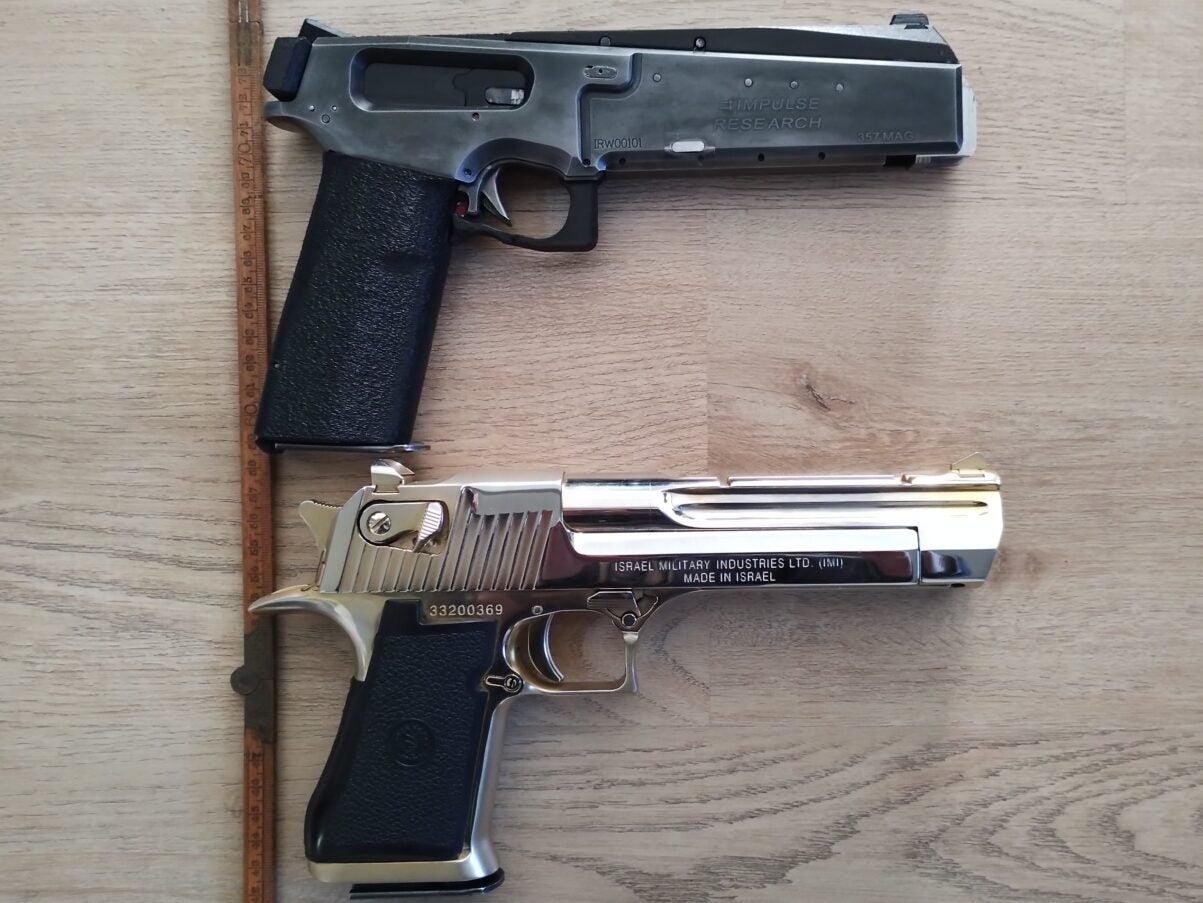
The Quest for The Low Bore Axis – Magnum Edition – The Wildebeest from Down Under – Visual comparison with a first generation .357 IMI Desert Eagle; note that the prototype has the older grip configuration (that better shows how slim it actually is)
Bernard had very limited choices (no .357 Mag Glock magazines), but the Desert Eagle magazine proved to be a great option.
Given the same feeding platform, same barrel length and expected use, a comparison with the Desert Eagle is quite obvious.
According to Bernard, the first difference is in the grip. The Desert Eagle has a notoriously large grip not only due to the long rounds in the magazine but also to the fact that the grip houses the mainspring for the hammer. The Wildebeest, a striker-fired pistol, only needs to house the magazine in the grip, allowing for a much slimmer format and opening up to double-stack solutions.
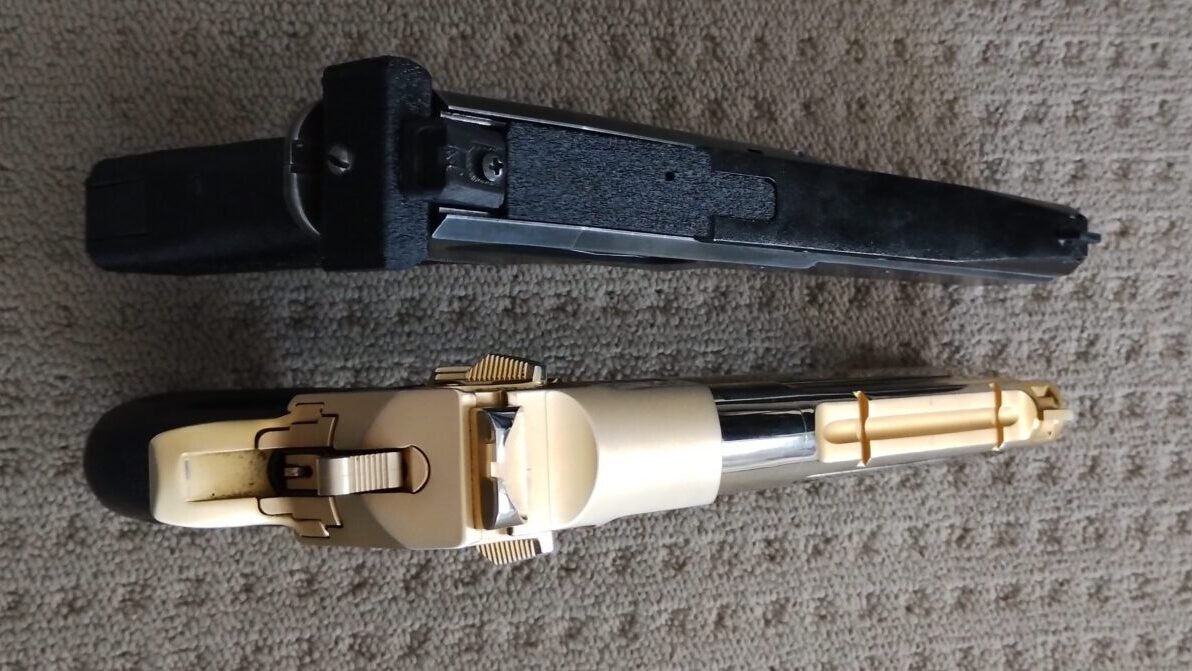
The Quest for The Low Bore Axis – Magnum Edition – The Wildebeest from Down Under
Shooting the pistols side to side offers a few findings. These are from the inventor himself, who recognizes his bias, but they seem sound.
First, even if a bit lighter than the original model Desert Eagle, the Wildebeest prototype appears easier to handle upon firing. This comes from the more comfortable grip and the more inline recoil given by the much lower barrel. Racking the slide is apparently easier as well.
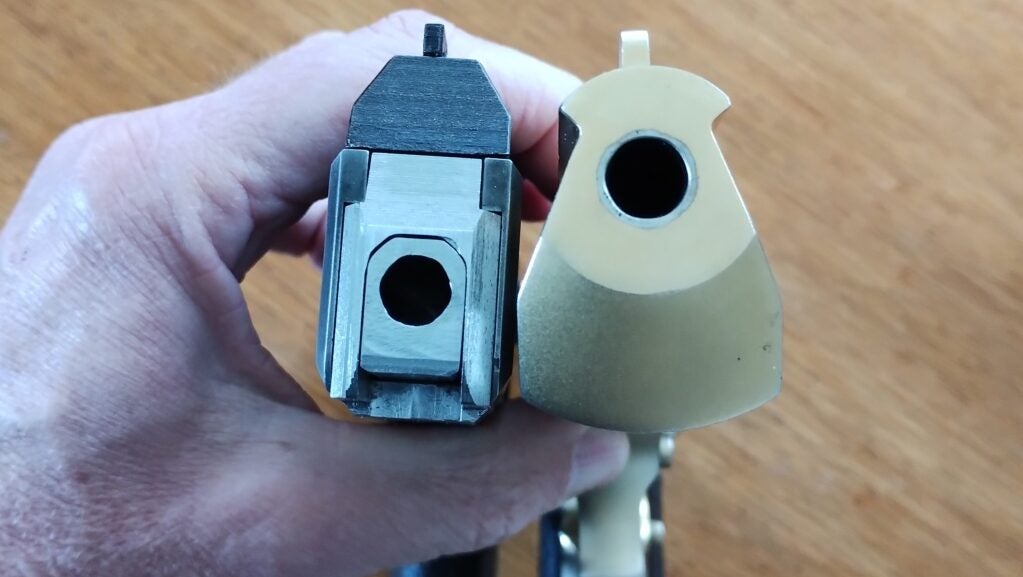
The Quest for The Low Bore Axis – Magnum Edition – The Wildebeest from Down Under – Muzzle view of the prototype vs the Desert Eagle; note how lower is the bore axis on the Australian pistol
Second, it appears that the Wildebeest sounds louder to the shooter. This is likely due to the fact that the fast action extracts the case when the barrel pressure is still higher than the atmosphere. All spent cases show no deformation even with the strongest loads, but the pressure difference is audible. Not a great suppressor host.
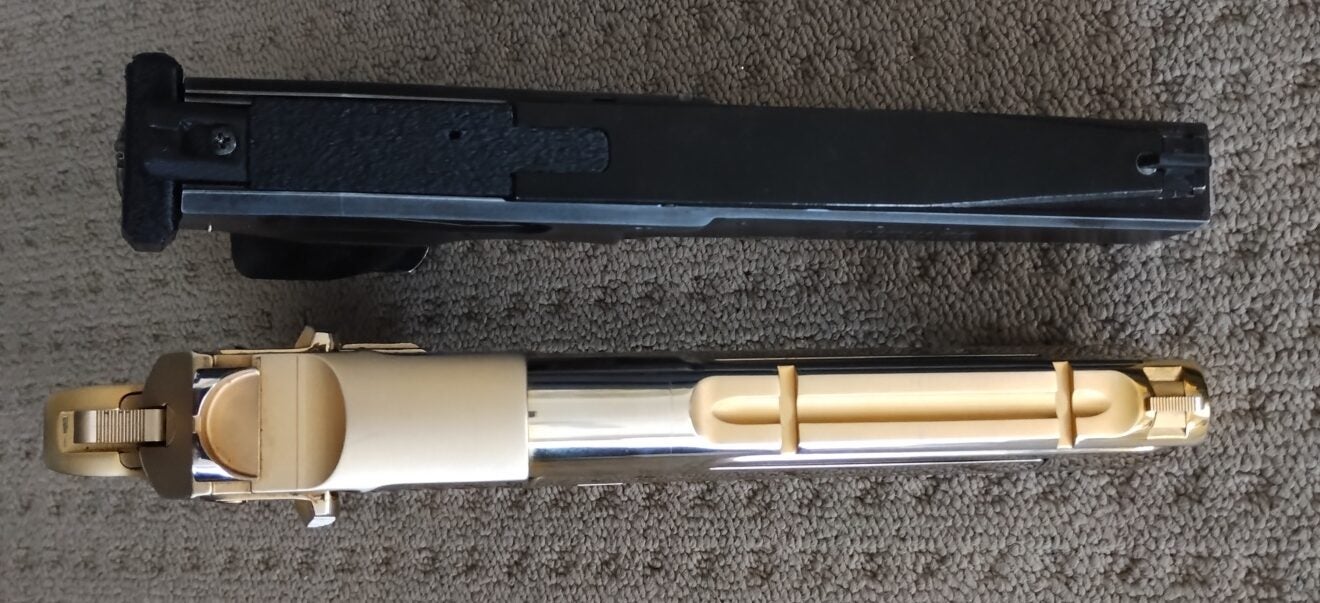
The Quest for The Low Bore Axis – Magnum Edition – The Wildebeest from Down Under
Lastly, at the chronograph, the ‘Beest consistently averaged 80 fps more than the gas-operated competitor, as it uses 100% of the gas to push the bullet forward.
5. What’s Next
Impulse Research, Bernard’s personal business, is in touch with undisclosed US-based firearms companies to bring the Wildebeest to market.
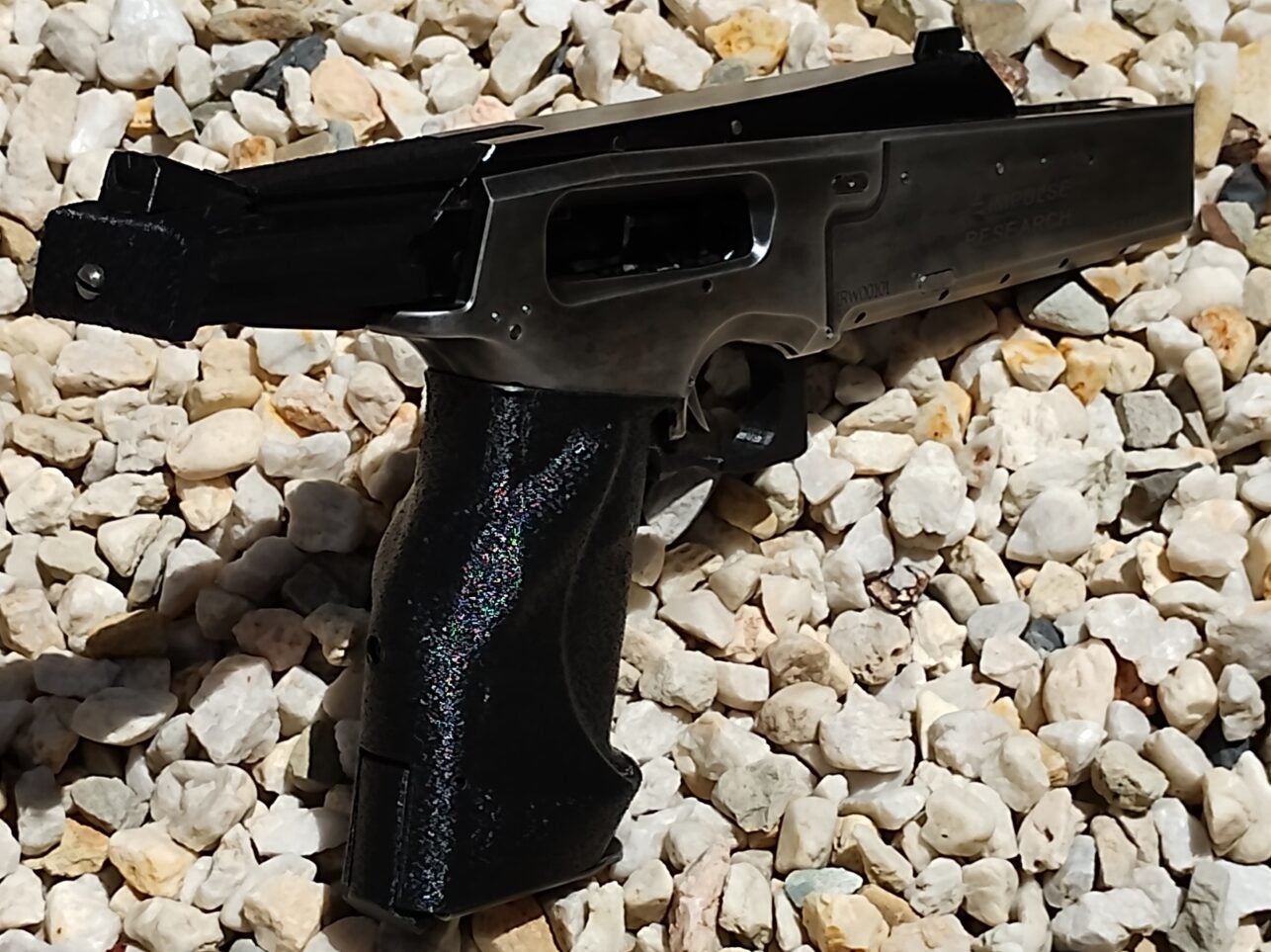
The Quest for The Low Bore Axis – Magnum Edition – The Wildebeest from Down Under – The prototype with the feeding slide locked open
While success with licensing to a partner would be the optimal outcome, Bernard, a very pragmatic person, keeps his options open. He is also pursuing the challenging task of becoming a licensed firearm manufacturer in Australia. Serving the global market from a small Australian operation is quite unlikely, but being able to have an already industrialized design would give the Wildebeest more chances of finding licensee manufacturers.
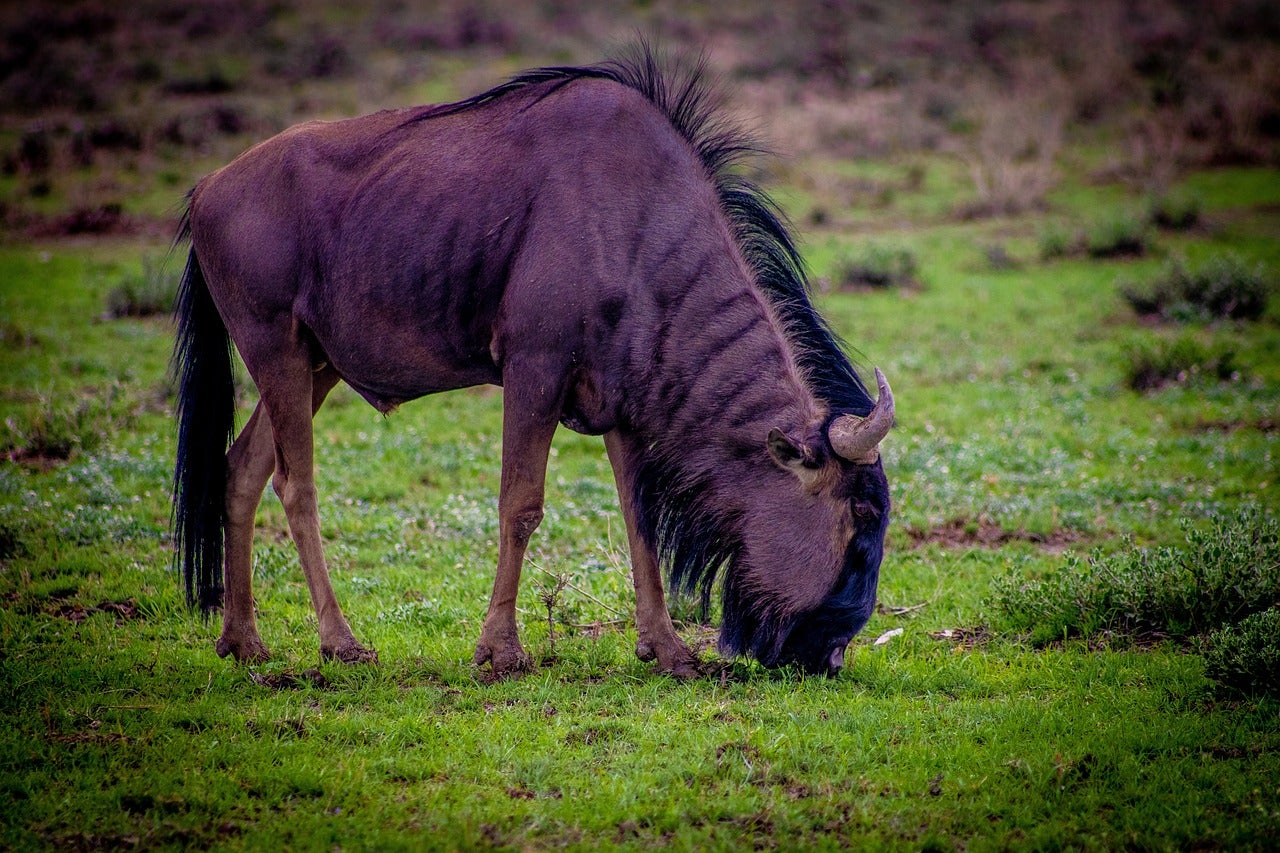
The Quest for The Low Bore Axis – Magnum Edition – The Wildebeest from Down Under – The African animal that the pistol is named after, also known as “gnu”, anagram of gun (Credit: pixabay)
6. Conclusions
What do you, TFB readers, think of this project? Would you love a range toy or pistol hunting setup like nothing else on the market? Are you intrigued by the novel operation? Do you see other potential applications for it? What calibers would you like to see it chambered for? Yours truly, for example, would like to see some big bore options such as .454 Casull, .475 Linebaugh or .500 Wyoming Express.
As usual, let us know in the comments.
All data and photos are courtesy of https://impulseresearch.net/ unless otherwise specified.
 Your Privacy Choices
Your Privacy Choices
